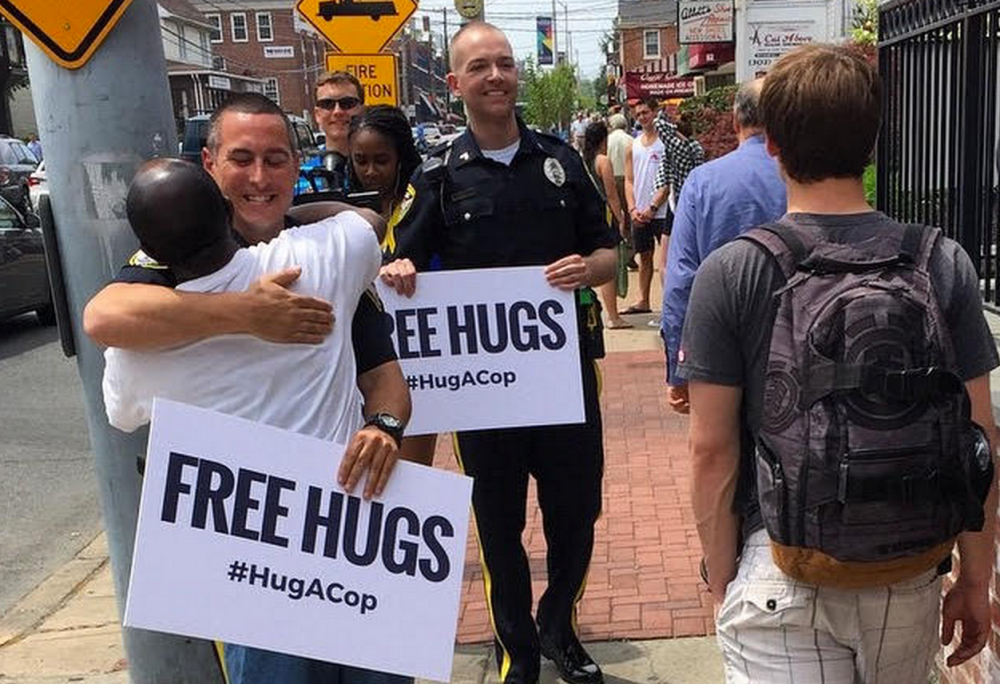One lesson the military ingrained in me very deeply in Iraq in 2003-2004 was the importance of winning the hearts and minds of the Iraqis.
A local interpreter of ours in Naseriyah, Iraq (which went largely skirmish-free during our time there) once said to me, “Everyone in Naseriyah has guns. If we had a problem with the Americans, you would know about it.” In other words, as long as we kept our relationship on good terms with the locals, we would have no issues. The take-home lesson for me was that the relationship between the community and those with any authority has to be strong for either to succeed.
Recent events in the U.S. have shown that in too many places, the relationship between law enforcement and their respective communities is one incident away from a complete breakdown. Creative community policing is one way to build and foster community relationships.
So as the Public Relations Officer at the Newark Police Department, a colleague and I went out on the streets of this college town to give longtime residents and on-campus students hugs.
https://www.youtube.com/watch?v=5lCwXPLqoSo
We knew we’d get some attention, that was in part the goal, to show there are police officers who care a lot about their communities and the people in them. But we never thought we’d go nearly as viral as a Dover cop dancing to Taylor Swift.
Now that our video, in which some people embraced us with our signs offering Free Hugs and others felt uncomfortable and walked by, has been seen by more than 14 million people and been replicated in five states and two countries (that we know of), we wanted to share some lessons we’ve learned.
1. Don’t focus on coming up with an idea for a video that might go viral.
Focus on coming up with something that will positively promote your organization or industry and let things happen from there. If your end result isn’t edgy, attacking stereotypes, or doing something out of the ordinary, it shouldn’t be the end result!
2. Remember that your co-workers are not your target market — the general public is.
The mentality of your co-workers might differ greatly from your target market due to their time in your industry. Additionally, any idea that pushes boundaries will likely provoke some strong reactions one way or another. Be prepared to hear some negative opinions from respected and valued co-workers, which, in the end, will have no bearing on the success of your video.
3. As soon as your video seems to garner a little success, don’t be shy about proactively reaching out to media organizations to help further promote it.
Consider creating a checklist of media outlets or groups that should be aware of your endeavor. After the video launches and once it has a little steam, reach out to those organizations on your checklist to further propel it.
4. Unpredictability is good.
Obviously, we planned to walk down Main Street with our signs, but we couldn’t plan for or predict the reactions we would receive. University of Delaware junior Tia Hill, the producer, did a great job in showcasing the positive and negative reactions we got. Those reactions gave the video a realistic vibe and avoided an overly polished feel. Even if the video is professionally produced and edited, incorporating some manner of unpredictability into it will help prevent it from feeling too contrived.
5. Have fun with it and remember to give thanks to those who helped or volunteered their time.
In this case, Tia deserves a lot of gratitude for stepping up and doing a great job with filming and editing it! Also, many thanks to Ricky Nietubicz from the City of Newark who assisted in a variety of ways and of course, my hugging partner, Aaron Olicker, for taking the chance with me.







